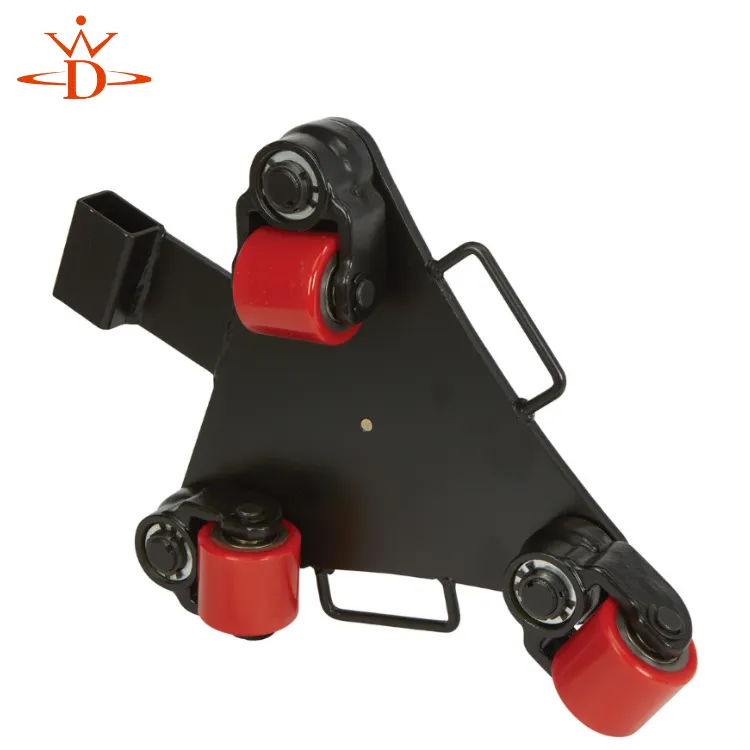Innovative Solutions for Heavy Lifting with Advanced Trolley Crane Technology
Understanding Trolley Cranes Functionality and Applications
Trolley cranes are essential components within the materials handling industry, characterized by their unique design and versatility. They serve an integral role in various sectors including construction, manufacturing, and shipping. This article explores the functionality, advantages, and applications of trolley cranes, shedding light on their significance in modern industry.
What is a Trolley Crane?
A trolley crane is a type of overhead crane that features a hoist mounted on a trolley, which can move along a beam. The trolley can traverse horizontally while the hoist performs vertical lifting. This dual mobility allows for greater maneuverability, enabling operators to lift and transport heavy loads with precision and efficiency. Typically, trolley cranes are suspended from structural frames or beams and are powered either manually or electrically.
Key Components
The primary components of a trolley crane include the following
1. Bridge The bridge is the main structure that spans the area where lifting occurs. It supports the trolley and provides stability. 2. Trolley The trolley moves horizontally along the bridge. It is equipped with a hoist that lifts, lowers, and holds the load.
3. Hoist The hoist is the mechanism responsible for the vertical movement of loads. It includes a motor, drum, and hook, among other parts.
4. Control System Trolley cranes can be operated using manual controls, but many modern systems utilize advanced controls that allow for remote operation, enhancing safety and efficiency.
5. End Trucks These are the mechanisms that support the bridge and allow it to traverse along its runway, often mounted on wheels for easy movement.
Advantages of Trolley Cranes
trolly crane

1. Space Efficiency Trolley cranes operate overhead, allowing for the use of floor space for other purposes. They make it possible to stack materials and use the area underneath for additional storage or workspace.
2. Increased Safety With the ability to lift heavy loads without the need for ground-level handling, trolley cranes significantly reduce the risk of accidents associated with manual lifting. Advanced safety features, including limit switches and emergency braking systems, further enhance their reliability.
3. Precision in Movement The design of trolley cranes allows for accurate control when moving loads. Operators can position heavy items precisely, which is crucial in settings like assembly lines and construction.
4. Durability and Strength Trolley cranes are built to withstand rigorous operating conditions. Their robust construction ensures they can lift substantial weights without compromising safety.
Applications of Trolley Cranes
1. Construction and Infrastructure In construction, trolley cranes facilitate the lifting and placement of heavy materials such as steel beams and concrete slabs. Their ability to operate in confined spaces and their efficiency in vertical lifting make them indispensable on job sites.
2. Manufacturing Within manufacturing plants, trolley cranes are often employed for assembly line operations, enabling workers to transport parts quickly and with minimal effort. Their versatility allows for multiple configurations depending on the manufacturing process.
3. Shipping and Ports Trolley cranes play a vital role in shipping and port operations, where they are used to load and unload containers from ships. Their capability to handle large and heavy cargo efficiently is important for maintaining productivity in busy ports.
4. Warehousing and Distribution In warehouses, trolley cranes enhance material handling operations, allowing for efficient stacking and retrieval of goods. Automated systems are increasingly being integrated for greater efficiency.
Conclusion
Trolley cranes are a cornerstone of modern material handling systems. Their unique design, combined with numerous advantages, makes them suitable for a wide range of applications in various industries. As technology continues to advance, the development of more sophisticated trolley crane systems promises to enhance safety, efficiency, and productivity even further. Understanding their functionality and relevance enables businesses to utilize these cranes effectively, ensuring streamlined operations and improved safety in the workplace. The ever-evolving landscape of material handling clearly illustrates that trolley cranes will remain a key asset for industries moving forward.
-
Unlock Seamless Relocation with Our Heavy Equipment Moving ExpertiseNewsJun.06,2025
-
Unleash Unrivaled Flexibility with Our Adjustable Gantry CraneNewsJun.06,2025
-
Unleash Heavy-Duty Efficiency with Our Industrial Gantry Crane SolutionsNewsJun.06,2025
-
Revolutionize Steel Handling with Our Magnetic Lifter RangeNewsJun.06,2025
-
Master Equipment Mobility with Premium Machinery Mover SolutionsNewsJun.06,2025
-
Elevate Your Material Handling with Magnetic Lifter TechnologyNewsJun.06,2025
-
YS Permanent Lifting Magnets: The Smarter Way to Handle SteelNewsMay.22,2025
